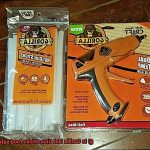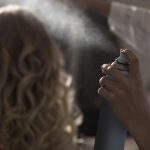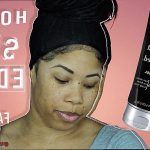Ready to take your tresses to the next level with some fabulous extensions or a killer wig? Well, before you bust out the hair glue and start sticking, let’s pause for a moment.
You’re probably wondering, “Is it safe to put hair glue on your real hair?” Don’t worry, I’ve got you covered.
So, buckle up and get ready to separate fact from fiction as we tackle this sticky situation head-on.
What is Hair Glue?
Contents
- 1 What is Hair Glue?
- 2 Potential Risks of Using Hair Glue on Real Hair
- 3 Quality and Type of Hair Glue to Use
- 4 Application Process and Maintenance for Safe Use of Hair Glue
- 5 Consultation with a Professional Hairstylist
- 6 Considerations for Those with Sensitive Scalps
- 7 Weighing the Benefits Against the Risks
- 8 Conclusion
Imagine effortlessly transforming your hair into a masterpiece, with flowing locks that turn heads wherever you go. The secret weapon? Hair glue. This revolutionary product has taken the beauty industry by storm, allowing you to achieve stunning hairstyles and add length and volume with ease. But is it safe to put hair glue on your real hair? Let’s explore this fascinating question and uncover the truth behind hair glue.
At its core, hair glue is an adhesive powerhouse. It contains special compounds called cyanoacrylates that work tirelessly to bond your hair extensions or strands together, creating a secure hold that defies gravity. However, the power of these chemicals comes with a caveat – if not used properly, they can wreak havoc on your scalp and precious locks.
The first concern that arises when using hair glue on real hair is the potential for damage. Picture this: you’ve fallen in love with your fabulous new extensions, but when it’s time to remove them, your natural hair rebels, resulting in breakage or even hair loss. Scary, right? Additionally, the chemicals in the glue can irritate your scalp or trigger allergic reactions, turning your dream hairstyle into a nightmare.
But fear not, for there is hope amidst these challenges. Choosing high-quality hair glue specifically formulated for use on real hair is crucial. Reputable brands prioritize your hair’s health and safety, ensuring their products are gentle and less likely to cause damage or adverse reactions.
Proper application and maintenance play vital roles in preventing harm as well. Following the manufacturer’s instructions diligently and avoiding excessive amounts of adhesive are key. Remember, leaving the glue on for extended periods can result in unwanted damage, so be sure to remove those extensions within the recommended timeframe.
When embarking on this hair journey, enlisting the help of a professional hairstylist who specializes in hair extensions is a wise move. They possess the knowledge and experience to ensure that the glue is applied correctly and removed without causing any harm. Trust their expertise and let them guide you to hair glue success.
If you have pre-existing scalp conditions or sensitivities, consulting a dermatologist before delving into the world of hair glue is highly advisable. These experts can assess your scalp’s condition and provide personalized recommendations to minimize the risk of adverse reactions, safeguarding your hair and scalp.
In conclusion, while hair glue holds the key to a world of stunning styles and endless possibilities, it comes with its fair share of risks. However, by carefully selecting top-notch hair glue, following instructions meticulously, and seeking professional guidance, you can minimize the chances of damage or adverse reactions. Remember, your hair’s health and safety should always take center stage in your hair journey.
Potential Risks of Using Hair Glue on Real Hair
Hair glue has gained popularity for its ability to create stunning hairstyles and add length and volume to natural hair. However, it’s important to understand the potential risks associated with using hair glue on real hair. In this article, we will explore the dangers of hair glue and provide tips on how to use it safely, ensuring the health and beauty of your precious locks.
Damage and Breakage:
- Hair glue’s strong adhesive properties can make your hair brittle and prone to breakage.
- Removing glued-in extensions or wigs without proper care can cause significant damage, leaving you with frayed and weakened strands.
- Prevention: Opt for high-quality hair glue specifically formulated for real hair to minimize damage. Follow the manufacturer’s instructions for application and removal carefully. Consult a professional hairstylist experienced in working with hair extensions for expert guidance.
Scalp Irritation and Allergic Reactions:
- Some individuals may experience scalp irritation or allergic reactions to the chemicals present in hair glue.
- This can lead to redness, itching, inflammation, and blistering of the scalp.
- Prevention: Perform a patch test before applying hair glue directly onto your scalp. Apply a small amount of glue behind your ear or on your wrist and wait 24 hours to check for any adverse reactions. Avoid using hair glue if you have a sensitive scalp or a known allergy.
Folliculitis and Infections:
- Hair glue can clog the pores on your scalp, leading to folliculitis (inflamed hair follicles).
- This condition can cause discomfort, itching, and even infection if left untreated.
- Prevention: Regularly cleanse your scalp and glued-in extensions or wigs to prevent the buildup of dirt, oils, and bacteria. Use gentle shampoos and conditioners designed for hair extensions.
Hair Thinning and Permanent Hair Loss:
- Repeated use of hair glue over time can weaken natural hair strands, leading to thinning and even permanent hair loss.
- Prevention: Give your hair regular breaks from glued-in extensions or wigs to allow it to breathe and recover. Practice proper hair care techniques, including regular deep conditioning treatments and avoiding excessive heat styling or tight hairstyles.
Quality and Type of Hair Glue to Use
Experimenting with different hairstyles is a joy, and hair glue is a fantastic tool that helps us achieve stunning looks. However, it’s crucial to choose the right type and quality of hair glue to ensure the safety and health of your real hair. In this comprehensive guide, we will explore the importance of selecting the right hair glue, the different types available, and essential tips for maintaining your hair’s integrity while using it.
Why Quality Matters:
Using cheap or low-quality hair glue can have disastrous consequences for your real hair. These glues often contain harmful chemicals that damage your strands, leading to breakage and brittleness. To safeguard your locks, it is essential to invest in a high-quality hair glue specifically formulated for real hair. Look for products labeled as “safe for real hair” or “specially formulated for real hair” to ensure you make the best choice for your hair’s health.
Types of Hair Glue:
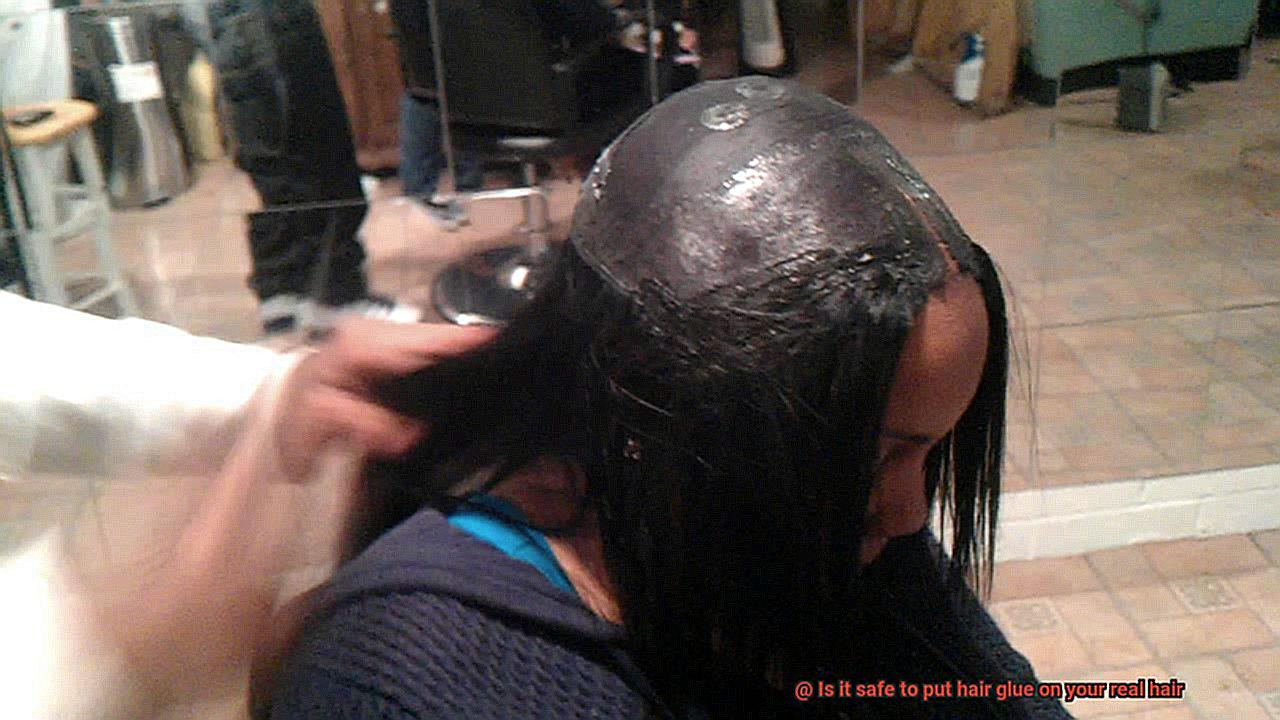
Bonding Glue:
- Provides a strong hold.
- Commonly used for extensions and weaves.
- Challenging to remove without causing damage.
- Follow application instructions carefully.
- Use a safe adhesive remover when removing extensions.
Tape-In Glue:
- Ideal for tape-in extensions.
- Offers a secure hold.
- Choose a tape-in glue designed for real hair.
- Avoid glues with harsh chemicals.
Lace Wig Glue:
- Perfect for lace front wigs.
- Provides a secure hold without damaging the natural hairline.
- Opt for water-based glues free from harmful ingredients.
Caring for Your Hair:
While using hair glue, it’s crucial to take proper care of your real hair and scalp. Follow these tips:
- Regularly cleanse your scalp.
- Moisturize your hair to maintain its health and integrity.
- Avoid excessive tension or pulling on glued areas to prevent breakage.
Application Process and Maintenance for Safe Use of Hair Glue
When it comes to rocking a fabulous hairstyle using hair glue, knowing the proper application process and maintenance requirements is essential for safe use. So, let’s dive into the juicy details, shall we?
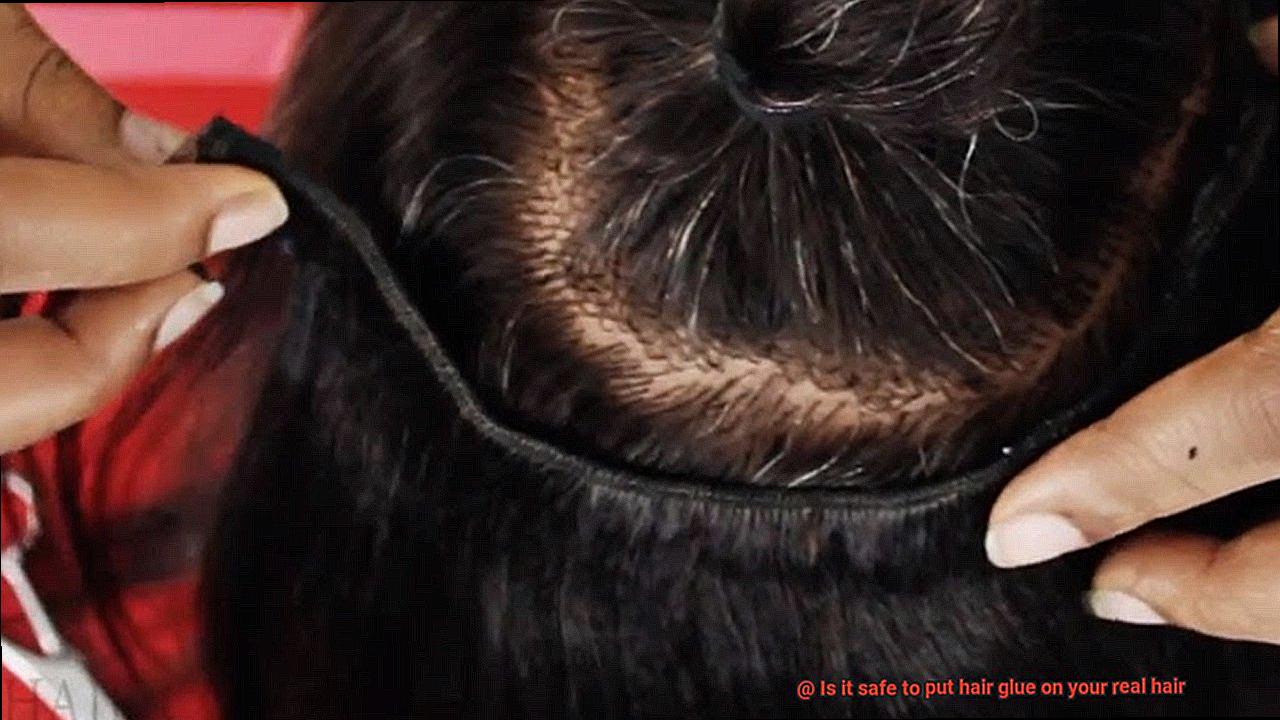
First things first, start with clean and dry hair. Give your locks a thorough wash and condition to remove any oils or residues that could interfere with the adhesive. We want a clean canvas for this masterpiece.
Before you go gluing away, it’s crucial to do a patch test on a small area of your scalp. This simple step can save you from potential allergic reactions or sensitivities. Safety first, my friend.
Now, let’s talk about applying the glue. Different glues may have different application methods, so read and understand the manufacturer’s instructions like your life depends on it (well, maybe not that dramatic, but you get the point).
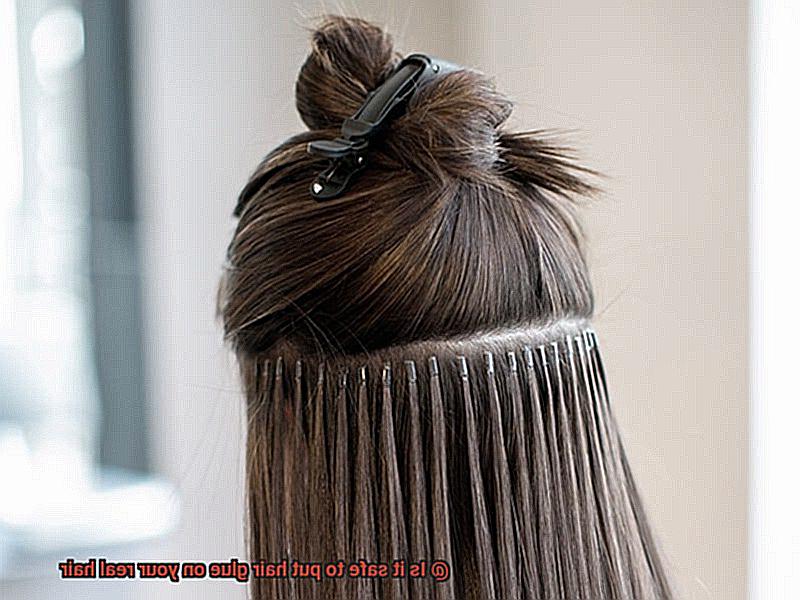
Thin layers are key. Use a small brush or applicator to evenly spread the glue. Start from the back of your head and work your way towards the front. We want that adhesive to be as smooth as butter on toast.
Pro tip: Avoid applying hair glue directly onto your scalp. Keep it a few millimeters away from your hairline to prevent skin irritation or damage. Nobody wants an itchy scalp, right?
Patience is a virtue. Allow the glue to dry completely before attaching any hair extensions or weaves. This usually takes around 24-48 hours. Don’t rush this step; good things come to those who wait.
Once those extensions are attached, treat them with tender love and care. Avoid excessive pulling or tugging on your hair, use gentle hair care products, and stay away from excessive heat styling or chemical treatments. We want those extensions to last, don’t we?
Regular maintenance is crucial for safe use of hair glue. Schedule periodic touch-ups with a professional hairstylist or extension specialist to keep that bond strong. And when you’re ready for a change, make sure to remove those extensions properly using specialized products. Your natural hair will thank you.
Remember, it’s always wise to consult a professional when it comes to hair glue. They have the skills and expertise to ensure a flawless application and minimize any potential risks or issues.
Consultation with a Professional Hairstylist
When it comes to using hair glue, consulting with a professional hairstylist is a step you don’t want to skip. These hair wizards have a magical ability to understand the complexities of different hair types and textures. During a consultation, they will assess your locks – from its condition to its health – to determine if using hair glue is the right choice for you.
Choosing the right glue can be overwhelming with so many options on the market. But fear not. A professional hairstylist will guide you towards high-quality adhesives specifically formulated for real hair. They’ll also spill the beans on application techniques and give you tips to maintain your natural hair’s integrity while rocking that fabulous glued style.
But let’s not forget about the potential risks involved. Your friendly neighborhood hairstylist will educate you about patch testing before going all-in with the adhesive. This little test helps identify any allergies or adverse reactions before committing to a full head of glue. Plus, they’ll remind you not to overdo it with the glue or leave it on for too long – scalp irritation and breakage are definitely not on your wishlist.
Now, here’s an insider tip: a professional hairstylist isn’t just going to push hair glue on you if it’s not the best option for your hair. They’ll suggest alternative styling methods like clip-in extensions or wigs that can give you that same amazing look without the potential risks of long-term adhesive use. It’s like having a personal stylist in your pocket.
Considerations for Those with Sensitive Scalps
Here are some important considerations and precautions to ensure that you achieve fabulous looks without any discomfort.
First and foremost, allergic reactions are a major concern for individuals with sensitive scalps. So, before diving into the glue game, perform a patch test. Apply a small amount of glue on a discreet area and be on the lookout for any redness, itching, swelling, or blisters within 24 hours. Safety is paramount.
Now let’s talk about frequency. Even if you pass the patch test, repeated use of hair glue can still irritate your delicate scalp over time. Give your scalp regular breaks and limit the use of hair glue to keep your locks and scalp happy.
Choosing the right hair glue is crucial. Opt for hypoallergenic or sensitive-skin-friendly formulas that minimize potential irritants and allergens. Dive into product labels and conduct thorough research to find the best product for your lovely mane.

Remember, not all hair glues are created equal. Some may contain harsh chemicals that irritate sensitive scalps, while others have gentler formulations. Be a savvy shopper and educate yourself on specific brands and ingredients. Your scalp will thank you.
Proper application techniques are also key. Follow the manufacturer’s instructions and resist the urge to go overboard with the glue. Over-application can lead to scalp irritation, so let’s avoid that unnecessary drama.
If you experience any discomfort or adverse reactions after using hair glue, it’s time to bid farewell and seek professional advice. A dermatologist or healthcare professional can assess your scalp’s condition and recommend suitable treatments or alternatives.
Lastly, don’t forget that there are other styling options available. Clip-in extensions and natural hairstyles can give you that wow factor without compromising your scalp’s health. Embrace your natural beauty and explore different styles that won’t cause any unnecessary scalp drama.
Weighing the Benefits Against the Risks
When it comes to achieving that perfect hairstyle, have you ever considered using hair glue? Before you take the plunge, it’s crucial to weigh the benefits against the risks. Just like any product, there are pros and cons associated with using hair glue on real hair. Let’s delve deeper into this topic to help you make an informed decision.
Benefits:
- Secure hold: One of the main advantages of using hair glue is its ability to provide a strong hold for various hairstyles. From sleek ponytails to intricate updos, hair glue can keep your style intact throughout the day.
- Versatility: Hair glue allows for versatility in styling options. You can easily switch up your look by adding extensions or creating unique designs using different colors of hair glue.
Risks:
- Potential damage: One of the primary concerns with hair glue is the potential damage it can cause to your hair and scalp. Some chemicals in certain hair glues can strip your strands of moisture, leading to dryness and breakage.
- Allergic reactions: Another risk to consider is the possibility of allergic reactions. Some individuals may have sensitivities to ingredients found in hair glue, resulting in redness, itching, or even severe allergic reactions.
- Removal challenges: Removing hair glue can be a challenge if not done correctly, potentially causing additional damage to your hair. It is crucial to follow proper removal techniques and use specialized products to minimize risks.
To make an informed decision about using hair glue on real hair, you should consider your personal preferences, hair type, and willingness to take on potential risks. Educate yourself about the product, read instructions carefully, and conduct a patch test before applying it all over your head.
Remember to use proper application and removal techniques to minimize damage and risks. If you have any concerns or questions, consult with a professional hairstylist or dermatologist for guidance.
fLfTTt3Dw6g” >
Conclusion
In conclusion, the safety of putting hair glue on your real hair is a complex issue with both pros and cons to weigh. On one hand, hair glue offers a secure hold for a range of hairstyles, giving you the freedom to experiment and express your unique style. It’s like having a personal stylist in a bottle, keeping your look flawless all day long. But caution is warranted.
The potential damage to your precious locks and scalp is a valid concern when it comes to using hair glue. Some glues contain chemicals that can suck the life out of your strands, leaving them dry and brittle. Imagine the horror of breakage and split ends. Allergic reactions are another worrisome possibility, as certain individuals may have sensitivities to ingredients lurking in hair glue. Nobody wants redness, itching, or worse – an allergic emergency.
And let’s not forget about the painstaking process of removing hair glue if you don’t do it right. Mishandling this sticky situation could lead to even more damage to your tresses. So be sure to follow proper removal techniques and use specialized products designed for this delicate task.
To make an informed decision about using hair glue on real hair, take into account your personal preferences, hair type, and tolerance for risk-taking. Arm yourself with knowledge about the product – read those instructions diligently. And before going all-in with full application, conduct a patch test on a small area of your scalp to check for any adverse reactions.
When in doubt, seek guidance from a professional hairstylist or dermatologist who can provide expert advice tailored to your specific needs. They’ll help you navigate through this sticky situation and ensure you make the best choice for the health and well-being of your natural locks.


